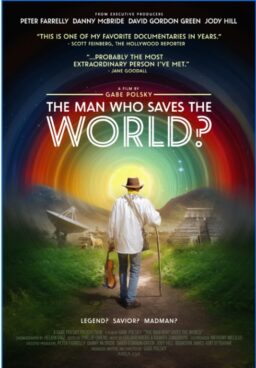This feature is a part of a series on the best films of the 2010s, resulting from our ranked top 25, which you can read here. This is #7.
“Under the Skin” is an immersive, disarming work of modern horror and science-fiction. It’s the kind of movie that rewards viewers’ patience through hypnotic, precise acting, cinematography, and sound design. Its plot and themes are also either basic or essential, depending on how thoroughly the movie works you over. Directed by onetime music video helmer Jonathan Glazer (“Sexy Beast,” “Birth“), who adapted Michel Faber’s novel with Walter Campbell, “Under the Skin” is a magic spell; if you disassemble it too much, it looks smaller than it feels. But when you’re in the movie’s grip, it’s overwhelming and sad, a feat of strong-arm cinematic mysticism that simultaneously clouds your mind and makes you pay extra close attention.
Glazer’s movie has a conventional story and character arc—”The Woman,” an unnamed alien played by Scarlett Johansson, undergoes a strange transformation as she seduces and destroys a series of unattached Glaswegian men—though neither is as important as the overwhelming air of dread that clings to everything in the movie. “Under the Skin” is consumed with a weird mix of anxieties, the kind that are baked into the defining works of both cosmic and body horror. Fears of an out-of-control body; of absorption from a presence that never used to be there, but is suddenly here and just as soon gone. Those fears can also be attractive, since “Under the Skin” exists somewhere between “2001: A Space Odyssey” and “Rabid.” There’s even an unexpectedly earthy quality to nightmarish scenes in which The Woman lures male victims into a limitless(?) black pool, where their bodies are suspended and drained, maybe of their organs, or their souls, or both, or neither.
There’s room for mystery in “Under the Skin,” which is what will make it an enduring source of acclaim and criticism. But it’s a secular sort of mystery, the kind that embraces rather than deflects from the subjective experience of living inside a body, with its own memories, baggage, and idiosyncrasies. Some of these experiences defy coherent explanation; others are every bit as blatant as they seem. The Woman’s emotions and motives are obviously a mystery to us, because we aren’t in her head, and can’t fully embrace or explain her; Glazer and his collaborators consistently keep viewers’ off-balance in order to preserve that mystery.

Watching “Under the Skin” often feels like taking a long, strange trip with filmmakers who communicate familiar emotions through alienating but sensuous details. We are shown how to read the movie as we watch it. The movie begins with a pinhole of light in the middle of a black backdrop. Then, a shift in perspective: the light grows larger, with starfish tendrils that make it look like a Christmas tree ornament. We’re looking at the creation of a human eye, and hearing a woman’s voice, distorted, as she recites letters, then phonetically sounded-out word fragments, and finally whole words. The parts of her eye come together, like pieces of machinery, a black lens fitting neatly inside a white iris. The black center spills over into its surrounding white membrane and blots out what appears to be a too-neat, computer-generated approximation of an eyeball. In a second’s time, the eye re-assembles and looks human, an intricate web of colorful tendrils at the center of a white membrane. A machine, or a complex organism, has become something that resembles us.
From here, every landscape in “Under the Skin” sort of resembles a gothic, haunted anatomy diagram (think “Fantastic Voyage” by way of “Species”). A pinprick of light travels down a capillary-thin road and around a pitch black mountain range. The night sky gives the road some illumination and texture. Then, a matching shot of the same road as the traveling light (from a motorcycle) loops around the road and disappears (into a tunnel). Now the camera is trained on the cyclist’s obscured face. Her helmet’s visor is down. The tunnel’s fluorescent lights complement Mica Levi’s white noise-like score and give the scene an appropriate degree of Kubrickian menace.
A biker, played by Jeremy McWilliams, meets up with the motorcyclist. Or, he emerges from an off-road ditch with her body draped across his shoulders. His footsteps are mechanical as he hauls her into a nearby white van. There’s a run in her stockings. She’s not the film’s protagonist; she’s younger, a local, “The Girl,” played by Lynsey Taylor Mackay. The Girl is laid out inside the van, whose interior is an unreal white backdrop of infinite white space. The Girl’s clothes are removed. A zipper is roughly undone, a metal belt buckle jingles, wool stockings are pulled off. Specific ambient sounds reverberate inside the van, giving the viewer the vague impression that there are, in fact, borders to this cavernous space. It’s real enough; it just doesn’t look real.

Now the Woman is on her way. She scans the streets, and passes over a few men. She stops to talk with one of them, played by Dougie McConnell. She asks him for directions. His accent is thick. The audio from inside the van has a harsh, metallic quality to it. Like it’s been recorded from inside a pressurized airplane cabin. It filters his voice, too, so that it sounds alien. She asks where he’s going. He says “to meet somebody.” She laughs nervously as he walks away, but her smile disappears once he’s turned round. He’s not for her.
But who is? The Woman singles out and destroys a few men, some more deserving than others. Then again, the concept of “deserve” doesn’t quite fit here; dazzling sensations and narrative economy seem to have been the two greatest priorities for Glazer and his collaborators. As a result, there’s a fairy-tale quality to the plot of “Under the Skin.” Its primal anxieties are Freudian enough, but not really moral, not beyond the tremor of relief that attends the post-seduction release of a key supporting character, the physically deformed Adam Pearson.
The Woman’s routine grows more erratic as the movie goes on, because she absorbs too much stimulation and too many emotions with each body that she consumes. She’s even attacked at one point, by David Acton’s unnamed “Woodsman.” But the Woman doesn’t accept, nor does she pull herself deeper into, the mysteries of her human body. It is perfect, beautiful, unapproachable; it can’t be occupied for long.












